Tips For Turnips Growing In Your Garden
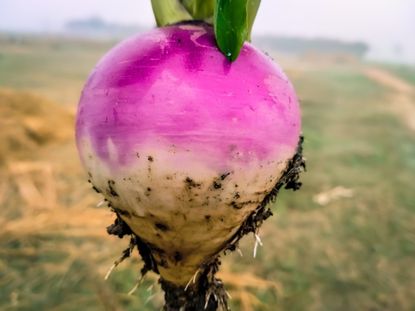

Many gardeners love to grow turnip roots in their garden. Like any root vegetable, turnips (Brassica campestris L.) do well along with carrots and radishes. They are easy to care for and can be planted either in spring, so you have turnips all summer, or in late summer for a fall crop. Let's look at how to grow turnips.
How to Grow Turnips
If you are planting a summer crop, plant the turnips early. If you are planting so you can have turnips to store throughout the winter, plant late in the summer to harvest turnips before first frost.
Turnips generally require a full sun location but will tolerate partial shade, especially if you plan on harvesting the plant for its greens.
Preparing the bed to grow turnip plants in is easy. Just rake and hoe it as usual for planting. Once you're done and the dirt isn't too wet, sprinkle the seeds and gently rake them in. Growing turnips should be done with seeds in the soil about 1/2 inch (1 cm.) deep at a rate of 3 to 20 seeds per foot (31 cm.). Water immediately after planting to speed germination.
Once you find your turnips growing, thin the plants to about 4 inches (10 cm.) apart to give the plants plenty of room to form good roots.
When planting turnips, plant them at ten day intervals, which will allow you to grow turnips for harvesting every couple of weeks throughout the season.
Harvesting Turnips
Come summertime, about 45 to 50 days after planting, you can pull a turnip up and see if it's ready for harvest. Start harvesting turnips once you find a mature turnip.
Gardening tips, videos, info and more delivered right to your inbox!
Sign up for the Gardening Know How newsletter today and receive a free download of our DIY eBook "Bring Your Garden Indoors: 13 DIY Projects For Fall And Winter".
If you have summer turnips, they are more tender. Growing turnips to produce in late fall produces a hardier variety that stores well in the drawer in the refrigerator or a cool, dry place. You can use them throughout the winter.
Having a vegetable crop you can actually use throughout the winter is a nice thing when you have a garden. Harvesting turnips can make a great root cellar vegetable for storing along with carrots, rutabagas, and beets.

Kathee Mierzejewski was with Gardening Know How in the very beginning, writing many of the site's foundational articles.
-
 Elegant Exotics: 8 Beautiful Amaryllis Varieties That Will Brighten Any Holiday Display
Elegant Exotics: 8 Beautiful Amaryllis Varieties That Will Brighten Any Holiday DisplayWhether red, pink, white or variegated, the right amaryllis varieties can enhance any living space, especially during the holidays. We round up eight of the most exquisite
By Bonnie L. Grant
-
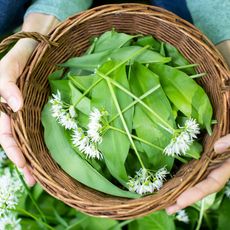 Forage For Herbs: 7 Tasty And Safe Wild Herbs To Pick Close To Your Own Backyard
Forage For Herbs: 7 Tasty And Safe Wild Herbs To Pick Close To Your Own BackyardIn addition to growing your own herbal staples, did you know there are several wild options out there that are safe and tasty – and free? Try foraging these 7 wild herbs
By Amy Grant
-
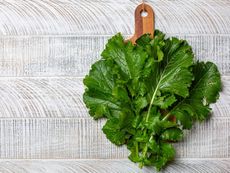 Tips For Cooking Turnip Greens From The Garden
Tips For Cooking Turnip Greens From The GardenTurnip greens are nutritious and tasty. Click to learn more about how to grow, prepare and store them.
By Amy Grant
-
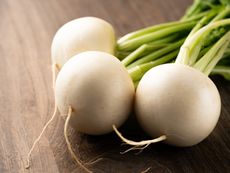 Growing Hakurei Turnips In The Home Garden
Growing Hakurei Turnips In The Home GardenRead about how to grow, harvest and prepare Japanese salad turnips.
By Bonnie L. Grant
-
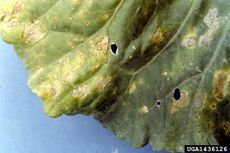 Turnip Downy Mildew Control – Treating Turnips With Downy Mildew
Turnip Downy Mildew Control – Treating Turnips With Downy MildewIf your garden includes turnips or other members of the brassica plant group, you should learn how to recognize downy mildew. Click on the following article for information about this fungal disease, including tips for treating turnip downy mildew.
By Teo Spengler
-
Turnip Bacterial Leaf Spot: Learn About Bacterial Leaf Spot Of Turnip Crops
Turnips with bacterial leaf spot will diminish plant health but will not usually kill it. There are several preventative techniques and treatments if spots on turnip foliage turn up. If you’re looking for more information, then this article will help.
By Bonnie L. Grant
-
What Is Turnip Black Rot – Learn About Black Rot Of Turnips
Black rot of turnips is a serious disease of not only turnips, but most other crucifer crops as well. What exactly is turnip black rot? Because the disease afflicts so many crops, it is important to learn about control. This article aims to help with that.
By Amy Grant
-
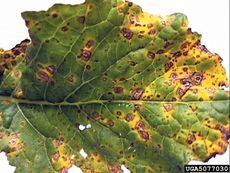 Alternaria Leaf Spot Of Turnip – Treating Turnips With Alternaria Leaf Spot
Alternaria Leaf Spot Of Turnip – Treating Turnips With Alternaria Leaf SpotIf left untreated, alternaria leaf spot of turnips can cause a significant decrease in yield and loss of quality. Getting rid of alternaria leaf spot of turnip isn't always possible, but you can take steps to keep the disease in check. Click this article to learn more.
By Mary H. Dyer
-
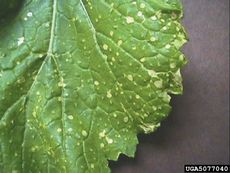 Turnip White Spot Info : What Causes White Spots On Turnip Leaves
Turnip White Spot Info : What Causes White Spots On Turnip LeavesIt is not uncommon to find white spots on turnip leaves. White spot of turnips causes economic damage where turnips are just grown for their greens. Learn how to prevent turnip white spot and save those healthy greens in this article.
By Bonnie L. Grant
-
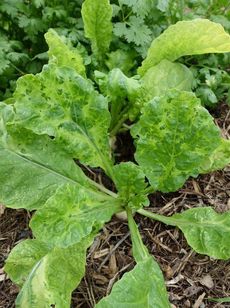 Turnip Mosaic Virus – Learn About Mosaic Virus Of Turnips
Turnip Mosaic Virus – Learn About Mosaic Virus Of TurnipsMosaic virus in turnips is considered to be one of the most widespread and detrimental virus infecting the crop. How is mosaic virus of turnip transmitted? What are the symptoms of turnips with mosaic virus and how can turnip mosaic virus be controlled? Find out here.
By Amy Grant